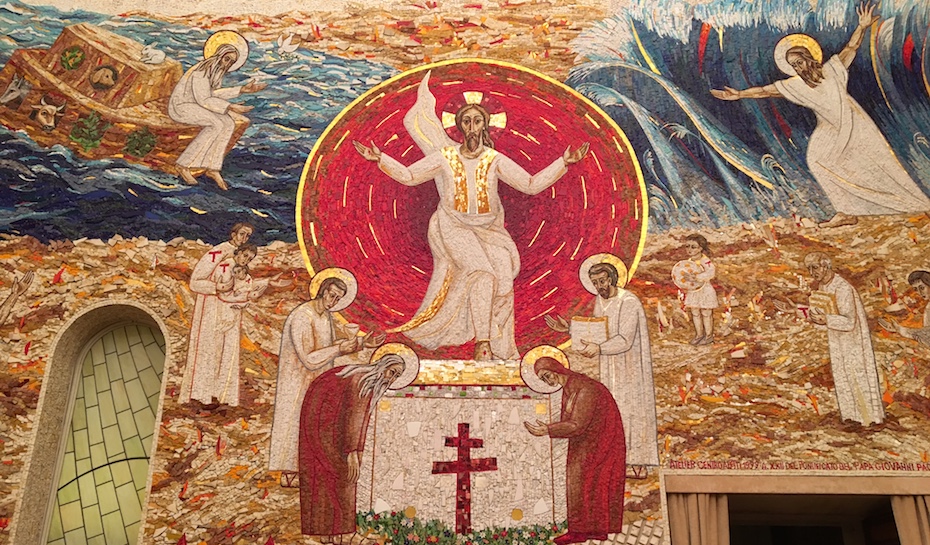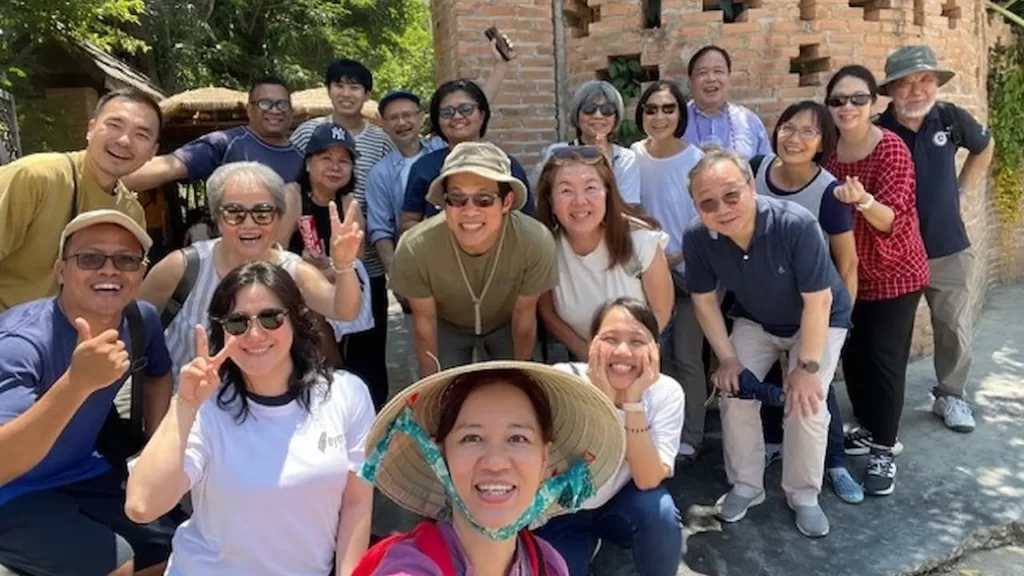
At Easter it dawns on us that the Lord’s ways are not our ways. Yet while Easter ushers in the new, the journey continues. After the 40-day desert experience leading to the tragic events on Calvary, we begin another 40 days at Easter until Ascension. The 40 days of Easter are a time for his disciples, and so for us, to rediscover love, to adjust to Jesus’ new way of being with us. Only after his Ascension, from his place at the right hand of God the Father, can he send the Holy Spirit to empower the Church, gathered around Mary the Mother of God, with sevenfold gifts.
Mary his Mother, who stood by the cross as evil confronted love, may have been the first person visited by the Risen Jesus. The Gospels do not speak of it, but St Ignatius tells us to use our intelligence. Imagine their meeting, their thoughts and feelings as they looked at each other, the words they speak. Mary can help us make this transition from death to life.
At Easter we discover Jesus in a new way. In John’s account of Mary searching and finding him, Jesus tells her “Do not cling to me” (John 20:17). She loved Jesus in his life on earth, now she must grieve the earthly Jesus and come to know him as the Risen Jesus. Like Mary, if we search for him we can find him. At first we may not recognise him; he is present in unexpected ways, in the other, the stranger, as for Mary he appeared to be the gardener.
One after the other, the characters in the Easter stories make this transition. At dawn, impelled by a confusion of love and grief, Mary Magdalene, Mary the mother of James, and Salome are the first to find the tomb empty, and so became the first witnesses of the Resurrection. While initially rudely ignored by the men, the women were first with the news, the first to believe and the first to be missioned to go tell how love had overcome death.
Thomas was called the “Doubter”, yet the Risen Jesus draws from him a deep felt affirmation of faith. Peter the Rock faltered that fateful night, his courage gave way; yet Love knew his true self, stood by him in turn, and set him as the firm foundation on which the Church is built. Two disconsolate disciples for whom the Jesus story had lost its lustre were leaving on the road down the hill to Emmaus. While self-absorbedly lamenting their loss, a stranger walks with them, gives them insight into that same story, and lights in their hearts the fire of hope that they are compelled to share.
“We believe that having died with Christ we will return to life with him.” (Romans 6: 8) In a world beset with challenges, especially for the displaced and dispossessed, may Easter give us new hearts. As we search for Jesus who reveals himself in the people around us, especially in those who suffer, may he open our hearts to joy and mercy, to receive the sevenfold gifts of the Holy Spirit: wisdom, understanding, counsel, fortitude, knowledge, piety and fear of the Lord.
This Easter, may you see the world with new eyes. May the Risen Jesus find you and help you to see him in the people around you. May he mission you to give his hope and joy to others.
Fr Mark Raper SJ
President, Jesuit Conference of Asia Pacific
Easter 2017
Main image: The Resurrection scene from a chapel in the Vatican






